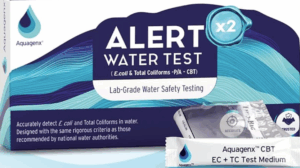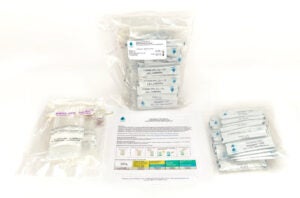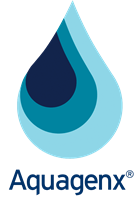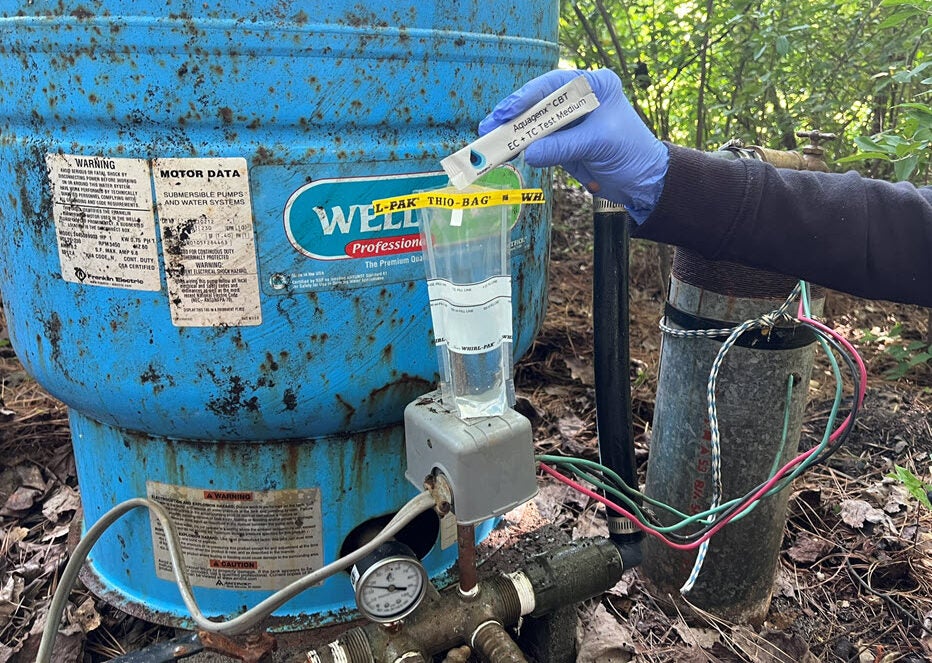Do Well Owners Have to Send Water Samples to Labs?
The U.S EPA’s rules that protect public drinking water systems (PWS) do not apply to privately owned wells. Federal, state and county government agencies do not regulate, monitor or treat tap water from private wells. It is the responsibility of private well owners to make sure their well water is free from potentially harmful bacteria and chemicals.
A PWS is a federally regulated entity that provides water for human consumption through pipes or other constructed methods of moving water. It monitors public water supplies for safety with routine water quality testing. PWS collect 100mL samples that are analyzed in state-certified laboratories for potential health risks according to EPA regulations and water quality standards.
Does this mean private well owners must also have their water samples analyzed in state certified laboratories? The answer is no. However, it is important to understand the pluses and minuses of buying DIY water quality test kits vs. sending water samples to state certified laboratories.
When private well owners shop for water quality test kits in a store or online they are faced with a plethora of products that test different bacteriological and chemical indicators (tiny organism that signals possible contamination of water). This blog post focuses on bacteriological tests.
Out of the hundreds of test kits in the market, how do well owners know which products are satisfactory and reliable for well water testing? To answer this question, well owners should understand what and how a PWS tests for bacteria in water according to EPA regulations.
A PWS must follow the EPA’s Revised Total Coliform Rule. The Rule mandates:
- Collect and analyze 100mL (milliliter) sample
- Test for the presence or absence of Total Coliform bacteria (bacteria commonly found in the environment)
- If test results reveal the presence of Total Coliforms, additional samples are required to specifically detect the presence or absence of E. coli bacteria (fecal bacteria found in intestines and feces of humans and warm blooded animals)
- Additional testing is required for E. coli bacteria because E. coli is the more specific indicator of fecal (from poop/stool) contamination in water than Total Coliforms
- The greatest bacterial waterborne risk to health are fecal pathogens (disease causing organisms)
Why EPA Says 100mL Water Sample
Why does the EPA specify a 100mL sample of water, which is approximately 3.38 fluid ounces? The reason for 100mL sample volumes was determined by massive scientific and public health research.
In the first half of the 20th century, scientists studied the presence of pathogens in water that cause Typhoid Fever. Typhoid is transmitted by Salmonella Typhosa (S. Typhosa) bacteria that live in the intestines (gut) of infected people and can contaminate food and water. These scientists looked at the ratios of coliform bacteria to S. Typhosa in water and wastewater.
They also looked at the health risks of Typhoid Fever that occurred in waterborne outbreaks in which concentrations of coliform bacteria and S. Typhosa were both quantified (measured or counted). They estimated health risks and made recommendations on water volumes to analyze.
Based on this and related work, the 100mL volume became the standard volume for analysis of water samplea. 100mL likely contains the true population of bacteria in a water sample, enough to determine the health risk with high reliability. Scientists concluded that a 10mL volume is too small and might pose a greater than acceptable exposure risk to S. Typhosa. A 1,000mL volume was considered too large, impractical and too complex for testing.
Since that time, 100mL volumes for water testing of E. coli and other bacteria have been required and mandated by the U.S. EPA and the World Health Organization (WHO). The 100mL sample volume provides the most accurate volume level to determine the actual health risk of drinking water for fecal bacteria and other harmful pathogens in water.
Not All DIY Tests in Market Analyze 100mL Samples
Many water test kits sold online and in home improvement stores do not analyze 100mL volumes of water. They might only analyze 1mL or 5mL sample volumes. Small volume tests cannot detect a big enough concentration of bacteria that accurately detect the true population of bacteria and health risk. For this reason, it is also possible small volume tests might indicate false negatives for E. coli in drinking water. False negative test results indicate a water sample is negative (absence) for a bacterial or chemical indictors when the sample actually is positive (presence) for the indicators. False negatives introduce a misleading, false sense of safety or security.
The bottom line is water quality tests that analyze less than 100mL samples of well water provide insufficient information according to the U.S. EPA regulations, WHO guidelines for drinking water, and drinking water quality standards of most countries in the world.
Not All DIY Tests Specifically Detect E. coli Bacteria
Another drawback of many commercial water test kits is they only detect Total Coliform bacteria and cannot specifically identify E. coli. If a test reveals a positive presence of Total Coliforms, that does not automatically mean the water is unsafe to drink. There are several reasons for this:
- Total Coliforms are a large group of bacteria, many of which do not originate from feces. Most Total Coliforms are harmless to our health.
- Not all Total Coliforms are coli
- Total Coliforms only give a general sanitary assessment of drinking water
To learn more about this read the difference between Coliform and E. coli bacteria.
Sending Well Water Samples to Labs
Private well owners’ other option is to contact their county’s health department that oversees well water testing. They provide various services to test a variety of bacteria and chemicals. County and state governments will always advise collecting well water samples that are sent to state certified laboratories that analyze the samples.
State certified laboratory testing is reliable, but it has a couple drawbacks. One is the cost for sample analysis. In Orange County, NC, the cost to analyze a single well water sample for bacteria and E. coli is currently $75. Another possible drawback is the amount of time if takes to receive test results, which is some number of days.
Here is a summary of home water testing vs. certified lab testing for Total Coliforms and E. coli bacteria.
Pluses of Home Water Quality Tests
- Easy to use
- No need to send samples to a laboratory
- Generally inexpensive, less expensive than state-certified lab samples
- Enable well owners to test their water more frequently and monitor well water for potential red flags, especially after flooding and other natural disasters
- Test results in 24-48 hours
- See Aquagenx Home Well Water Test (100mL sample, E. coli & Total Coliform bacteria)
Minuses of Home Water Quality Tests
- Hundreds of products on the market, difficult to choose
- Most of them do not analyze 100mL sample volume as required by EPA
- Most are unable to specifically detect E. coli, the greatest bacterial risk to health
- Quality of tests varies widely and not all test results are reliable
Pluses of State-Certified Lab Testing
- Reliable testing procedures and results
- Test according to EPA regulations for drinking water quality testing
- Testing methods are validated by the EPA
Minuses of State-Certified Lab Testing
- Cost per sample can be expensive
- Time to receive results is longer than home tests
- Logistical requirements to deliver or send well water samples to county health department or laboratory
Key Terms
Public Water System: federally regulated entity provides water for human consumption through pipes or other constructed methods of moving water
Indicator Organism: tiny organism that signals possible contamination of water or food
Total Coliform Bacteria: bacteria commonly found in the environment
E. coli Bacteria: fecal bacteria found in intestines and feces of humans and warm blooded animals
Pathogens: organisms that cause disease
Aquagenx Well Water Test Kits
Buy on Amazon & Walmart
Buy kits that contain 2, 5, or 10 tests

Buy In Bulk from Aquagenx
Buy kits that contain 25, 50 or 100 tests


